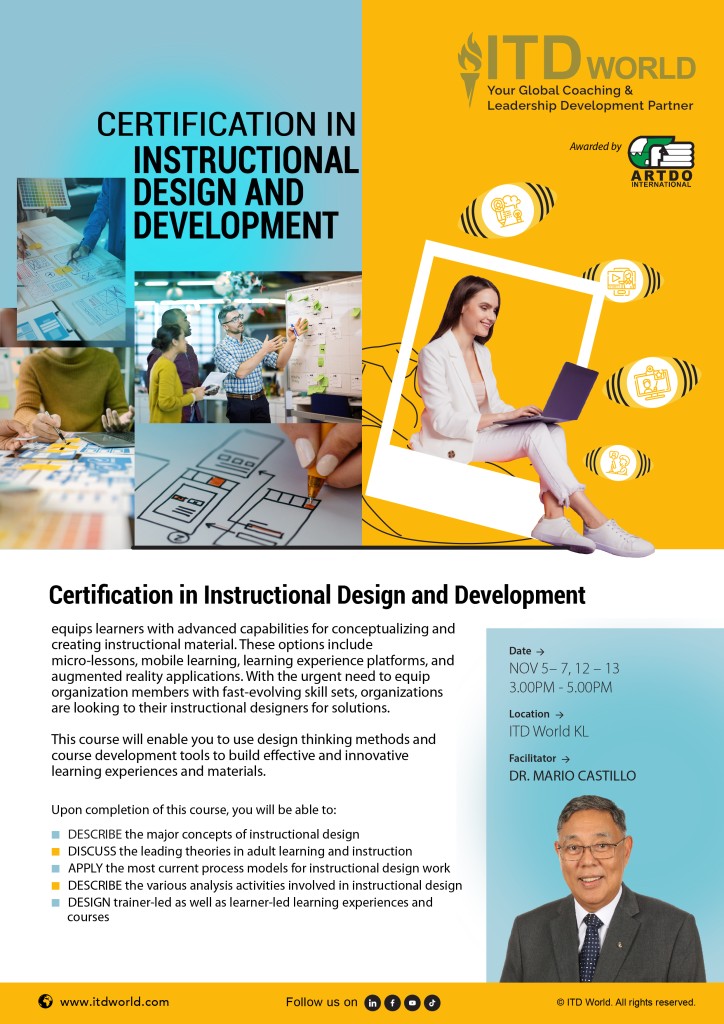

All things being equal, people will work with people they like. All things not being equal, they still will.
– John C. Maxwell



If I had no sense of humor, I would long ago have committed suicide.
– Mahatma Gandhi

TRANSFORMATIONAL COACHING QUESTIONS
EUREKA VIDEO
LATEST HAPPENINGS AT ITD WORLD
Support your organization’s talent development goals with ITD World’s Certification in Instructional Design and Development (CIDD) that is HRDC claimable.

Leverage on creativity, instructional design principles, and adult learning theories to create engaging instructional materials for effective learning and knowledge transfer.
With this certification, you are will be equipped with the capabilities to accelerate learning and development that builds competitive advantage for your team and organization.
Register today and we will get back to you soonest!
FURTHER RESOURCES